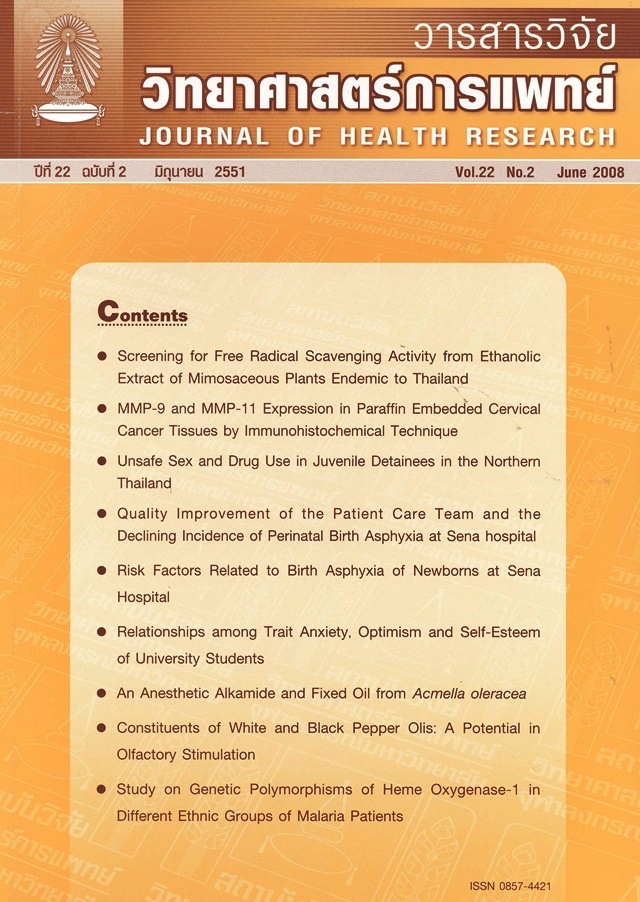Constituents of White and Black Pepper Oils: A Potential in Olfactory Stimulation
Keywords:
Piper nigrum, white pepper, black pepper, essential oil, dysphagia, aspiration pneumoniaAbstract
Commercial white and black peppers were studied for their essential oil constituents by hydrodistillation and gas chromatographic-mass spectrometric analysis. It was found that white pepper oil (ca. 1.3 %, dried wt.) and black pepper oil (ca. 1.6 %, dried wt.) composed of the same volatile constituents but in the different quantities. Monoterpenes especially 3-carene were detected as rich components in white pepper, whereas sesquiterpenes especially β-caryophyllene were much rich components in black peppers. It has been reported that there are significantly improved sensory and reflexive motor movement of swallowing in the elderly by black pepper oil.







